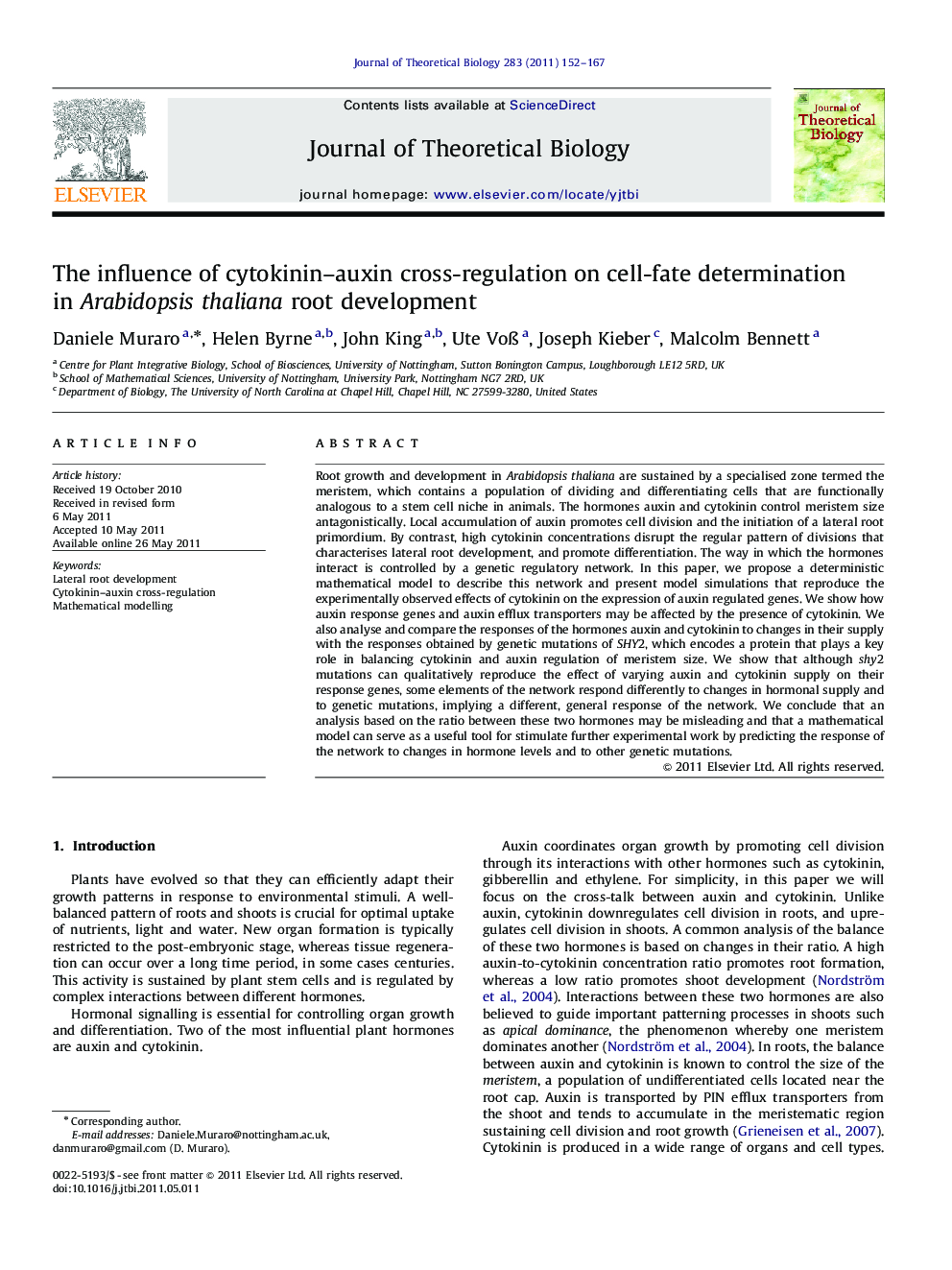| Article ID | Journal | Published Year | Pages | File Type |
|---|---|---|---|---|
| 4497054 | Journal of Theoretical Biology | 2011 | 16 Pages |
Root growth and development in Arabidopsis thaliana are sustained by a specialised zone termed the meristem, which contains a population of dividing and differentiating cells that are functionally analogous to a stem cell niche in animals. The hormones auxin and cytokinin control meristem size antagonistically. Local accumulation of auxin promotes cell division and the initiation of a lateral root primordium. By contrast, high cytokinin concentrations disrupt the regular pattern of divisions that characterises lateral root development, and promote differentiation. The way in which the hormones interact is controlled by a genetic regulatory network. In this paper, we propose a deterministic mathematical model to describe this network and present model simulations that reproduce the experimentally observed effects of cytokinin on the expression of auxin regulated genes. We show how auxin response genes and auxin efflux transporters may be affected by the presence of cytokinin. We also analyse and compare the responses of the hormones auxin and cytokinin to changes in their supply with the responses obtained by genetic mutations of SHY2, which encodes a protein that plays a key role in balancing cytokinin and auxin regulation of meristem size. We show that although shy2 mutations can qualitatively reproduce the effect of varying auxin and cytokinin supply on their response genes, some elements of the network respond differently to changes in hormonal supply and to genetic mutations, implying a different, general response of the network. We conclude that an analysis based on the ratio between these two hormones may be misleading and that a mathematical model can serve as a useful tool for stimulate further experimental work by predicting the response of the network to changes in hormone levels and to other genetic mutations.
► We model the cross-talk between auxin and cytokinin during root development. ► We analyse the response of their signalling network to mutations and hormonal perturbations. ► We show that some elements of the network respond differently in these two cases. ► We show that an analysis based on hormonal ratio may be misleading. ► We conclude that this mathematical model can stimulate further experimental work.
